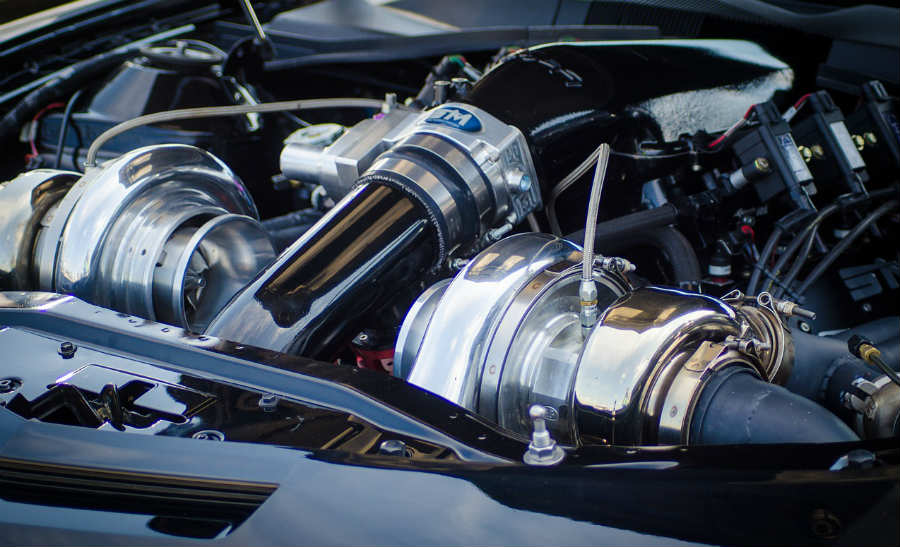An idler pulley is basically a pulley housing with an integral sealed bearing pressed in. The purpose of the idler pulley is to facilitate serpentine belt routing, either to route it around an engine obstruction or to wrap the belt around an accessory pulley more fully in a way that improves its bearing surface and grip. Some engines have more than one, and some engines with fewer driven accessories will not need an idler pulley. If present, the idler pulley is usually attached to the front of the engine on the timing cover or a bracket.
Replacement is normally simple, involving moving the serpentine belt out of the way and undoing one or two bolts. The car makers who set labor times sometimes figure idler pulley replacement as an additional time on top of serpentine belt replacement, and sometimes they figure it as a shorter operation in which the belt doesn’t need to be fully removed. In any case, the difference is small, and the job is usually pretty simple.
How to Check Belt Noise
The main thing to rule out with drive belt noise is a simple problem with the belt itself. A quick test is to spray some water or a soapy solution on the serpentine belt while it’s making noise. If the noise goes away, the problem is likely with the belt. If it doesn’t go away, then it’s best to listen (most often with a mechanic’s stethoscope) at the housing or mount of each driven component and pulley. Usually, things are obvious at that point. The next step would be to remove the belt and check the pulleys for play and noise by spinning them by hand. A pulley with a bad bearing will sound dry, rough, and loose, while a good new bearing will feel buttery smooth and quiet.
Costs of Idler Pulley Replacement
For some examples of the costs of replacing an idler pulley on common vehicles, assuming a labor rate of $150:
For a 2009 Dodge Grand Caravan with a 3.8 liter engine, the labor time for replacing the idler pulley is .7 of an hour. An OE replacement part is about $29, and a Gates part is about $18. This would make the job about $134 with factory parts, and about $123 with aftermarket parts.
For a 2007 Chevrolet Silverado with a 5.3 liter engine, the labor time for replacing the idler pulley is .3 hours. An OE replacement part is about $96, and a Dayco part is about $38. This makes the job about $141 with factory parts, and about $83 with aftermarket parts.
For a 2005 Mazda 6 with a 3 liter engine, the labor time for replacing an idler pulley is .7 hours. An OE replacement part is about $48, and an ACDelco part is about $28. This makes the job about $153 with factory parts, or about $133 with aftermarket parts.
For a 2007 Volkswagen Jetta with a 2.5 liter engine, the labor time for replacing an idler pulley is 1.2 hours (there are two on that engine, and there would be some overlapping labor if both were replaced). An OE replacement part is about $65, and a Dorman part is about $27. This makes the job about $245 with factory parts, or about $207 using aftermarket parts.
Of course, labor rates can vary significantly; there are numerous different suppliers of parts; prices can vary greatly from place to place; and even the same OE parts prices will vary significantly depending on the market.
Other Parts that Might Be Recommended
The belt, of course, is the main part that is handled during an idler pulley replacement. Belts also wear with age and use, and the rubber, which is the main component of a serpentine belt, does lose its good properties over time. If there are indications that the serpentine belt might need replaced, it would probably be recommended and is considered a normal maintenance item.
Related Article: Serpentine Belt Replacement Cost

Idler pulleys are usually replaced when the bearings become noisy. The bearings are sealed units that are non-serviceable. In most cases, the bearing lubricants simply wear out due to normal use, and from age and heat cycling, then you get noise, and eventually the internal metal surfaces break down. With the belt off, any bearing that feels dry is probably best replaced, and if there is more than one idler pulley, it is a normal recommendation that they be replaced together. It’s not necessary, perhaps, but the parts costs are usually small as compared to labor, and doing the whole job once is more economical than doing the job in pieces over time.
The serpentine belt tensioner is another part that uses a similar pulley and bearing, and it is sometimes recommended to be replaced while things are apart for an idler pulley replacement.
Related Article: Serpentine Belt Tensioner Replacement
Being a more expensive part, costs should be kept in mind, of course. The other bearings in the components driven by the serpentine belt are less similar to the idler pulley bearing, but with the belt off, it would be customary to inspect them and make recommendations if or as needed.
Frequently Asked Questions
Yes, probably. Usually, once the belt is off, an idler pulley is only held on by one bolt and is pretty easy to replace.
It’s pretty important. It keeps the belt tight and in position, and the belt usually runs the cooling system, the charging system, and the power steering, which are all important.
They may both use identical pulleys and bearings, but the idler pulley is in a fixed position, while the tensioner pulley is attached to a spring-loaded housing, which holds the belt in tension.
